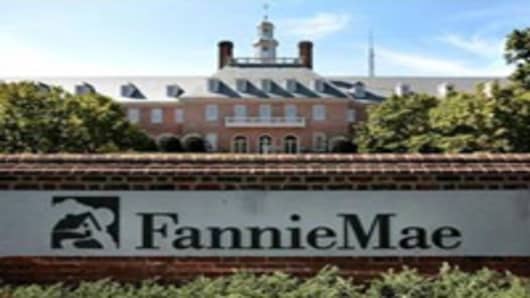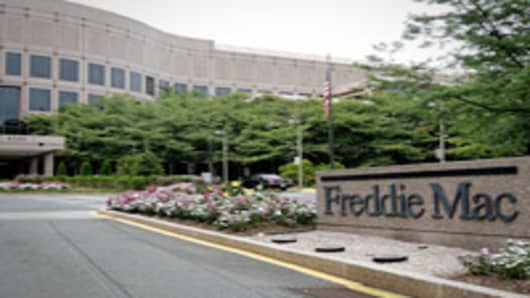As part of its plan to “wind down” mortgage giants Fannie Mae and Freddie Mac, the U.S. Treasury Department is changing the terms of the capital support agreement that kept the two afloat in the first place.
Fannie Mae and Freddie Mac were put under government conservatorship in 2008, in the wake of the housing and mortgage crash. (Related Link: Fannie & Freddie Takeover.)
“With today’s announcement, we are taking the next step toward responsibly winding down Fannie Mae and Freddie Mac, while continuing to support the necessary process of repair and recovery in the housing market,” said Michael Stegman, Counselor to the Secretary of the Treasury for Housing Finance Policy in a press release.
Treasury officials announced they will now require the two to reduce their investment portfolios at a faster rate, 15 percent a year instead of the previous 10 percent.
The Treasury is also replacing the ten percent dividend payments the two make to Treasury on its preferred stock investments with a “quarterly sweep of every dollar of profit that each firm earns going forward.” Fannie Mae and Freddie Mac only became profitable again this year, the first time since the crash of the market.
“We see this as a positive for housing, as it ensures that Fannie and Freddie will remain in business,” writes Jaret Seiberg of Guggenheim Partners. “Absent Fannie and Freddie, we believe housing finance will become more expensive and less available.” (Related Link: US Home Builders Begin to See Credit Thaw.)
Seiberg also notes that this is a positive for private mortgage insurers because Fannie Mae and Freddie Mac require such insurance when a borrower puts down less than 20 percent in equity on a loan. Without Fannie and Freddie, the private insurers would lose a lot of business.
The announcement, however, does not really speak to the future of the GSEs, rather just rids them of a counterproductive debt repayment situation. With the former 10 percent dividend requirement, Fannie and Freddie, up until the past two quarters, were actually having to borrow more from the Treasury in order to pay the Treasury the dividend.
In other words, it was a circular draw that didn’t make a lot of fiscal sense. Now that they are profitable, they will instead pay the profits.
Given the enormous debt still owed to taxpayers, $188 billion less $46 billion paid back so far, this insures Fannie Mae and Freddie Mac will never be what they once were.
“They are never going to come back as privately chartered or quasi-governmental because they’ve signed a business plan where they can’t keep any of that profit going forward,” said Guy Cecala of Inside Mortgage Finance.
Reducing their portfolios at a faster rate will, however, make it harder for the two to make money, because the lion’s share of their income now is coming from their portfolios. Friday’s announcement does not affect borrowers in general, nor mortgage rates or availability, and it says nothing about the future of the GSE’s. It does offer some near-term security to taxpayers.
“In the short run it protects the borrowers to insure that the GSEs continue to be a viable resource,” said David Stevens, President and CEO of the Mortgage Bankers Association. “If something were to happen to the GSEs in the next administration that put them on a path to a different state or eliminated them, this insures that the Treasury maximized, within their authority, the re-collection of every dollar possible.”
Fannie Mae and Freddie Mac earned a collective $8 billion in the second quarter of this year, after paying $4.7 billion in dividends to the U.S. Treasury.
-By CNBC's Diana Olick
Questions? Comments? RealtyCheck@cnbc.comAnd follow me on Twitter @Diana_Olick




